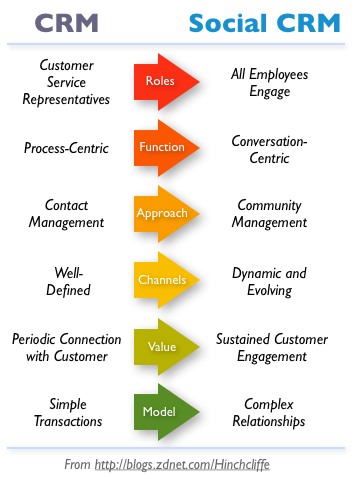Social CRM - Organizations Need to Reconsider How They Relate to Customers
/ Consider these statistics from the socialnomics web site: HKQGXD9FR7VD
Consider these statistics from the socialnomics web site: HKQGXD9FR7VD
- By 2010 Gen Y will outnumber Baby Boomers….96% of them have joined a social network;
- Social Media has overtaken porn as the #1 activity on the Web; and
- 1 out of 8 couples married in the U.S. last year met via social media.
There can be no doubt that social media is becoming a significant method of communicaiton and connection for people across the globe. But what does that mean for organizations ? What are some of the implications ?
Dion Hinchcliffe's recent post Social CRM, Ground Zero for Enterprise 2.0 in 2010 does a good job of sharing some forward looking thinking about how organizations must reassess their methods of interacting with customers, partners and employees based on social media trends. For more details on these trends watch the video below.
Social CRM: Enterprise 2.0
At its core businesses must redesign their method of delivering support and interaction based on these new mainstream communication and collaboration tools. As Hinchcliffe notes, Enterprise 2.0 is a new and popular term that describes using lightly structured social environments to collaborate and capture knowledge in a discoverable, reusable way. Typically, these tools are highly social and freeform, so that they can adapt to the problem at hand. Enterprise 2.0 is generally applied in a business setting between at least one to three types of participants: workers, trading partners, and customers. Social CRM fits the bill for all of these criteria.
What Does This Mean ?
Michael Krigsman came away with the following perspective in his recent interview with CRM guru Paul Greenberg:
Successful customer relationships are based on interacting, cooperating, and collaborating with customers to provide mutual value. Technology is an important enabler but is secondary to relationship.
There’s been some question wether Social CRM is part of the broader Enterprise 2.0 story. Reviewing GetSatisfaction for examples from major, well-known firms might help in evaluating that question. Regardless, with saleforce.com's new chatter platform among other CRM's that are enabling social media integration, the practice is coming to the mainstream and deserving of consideration. Fundamentally, one must reconsider the paradigms of roles, functions and methodologies that are represented in the graphic below in order to successfully deploy these new tools. More than the technology, leadership's thinking about interactions is critical to evolving to this new higher plane.









